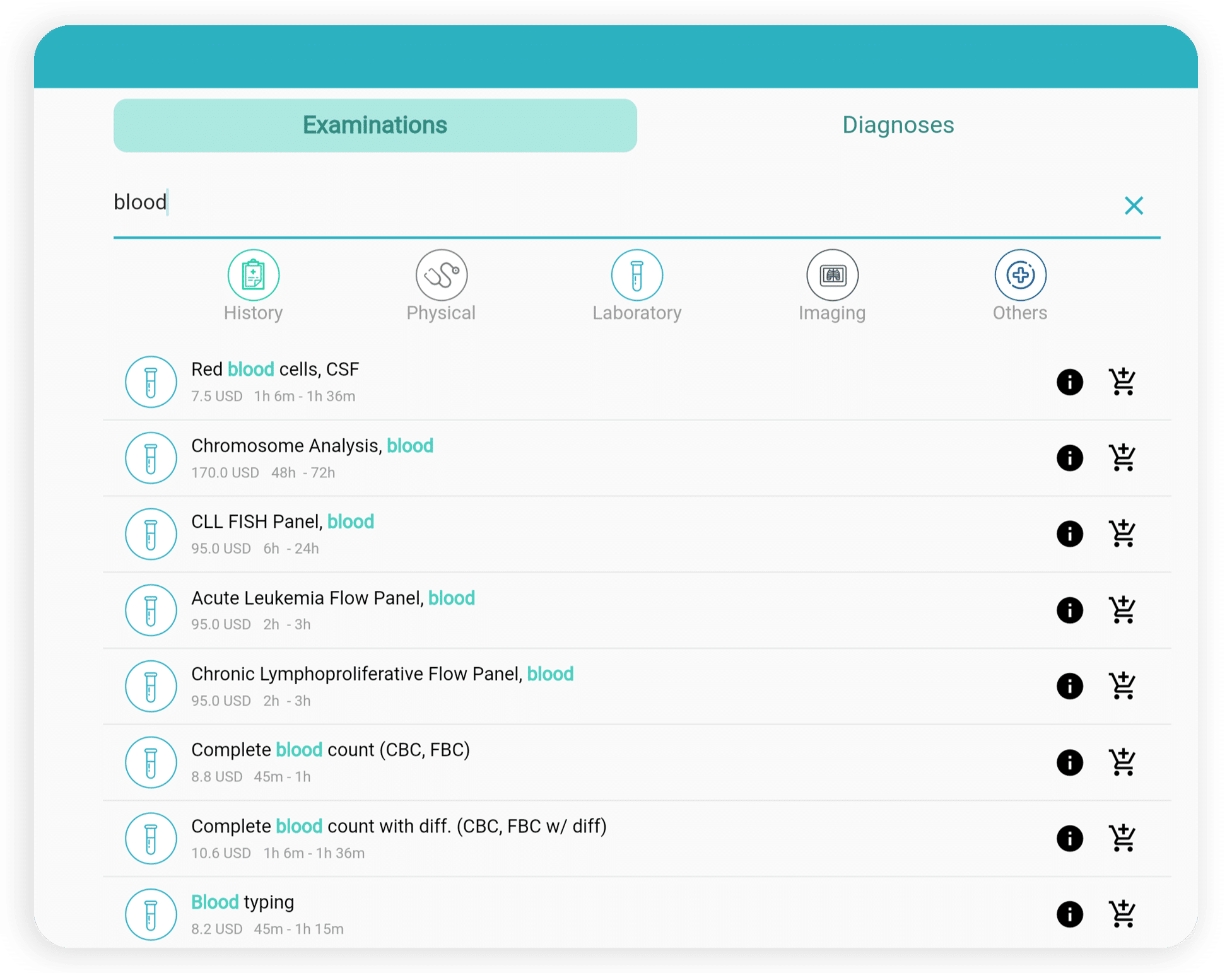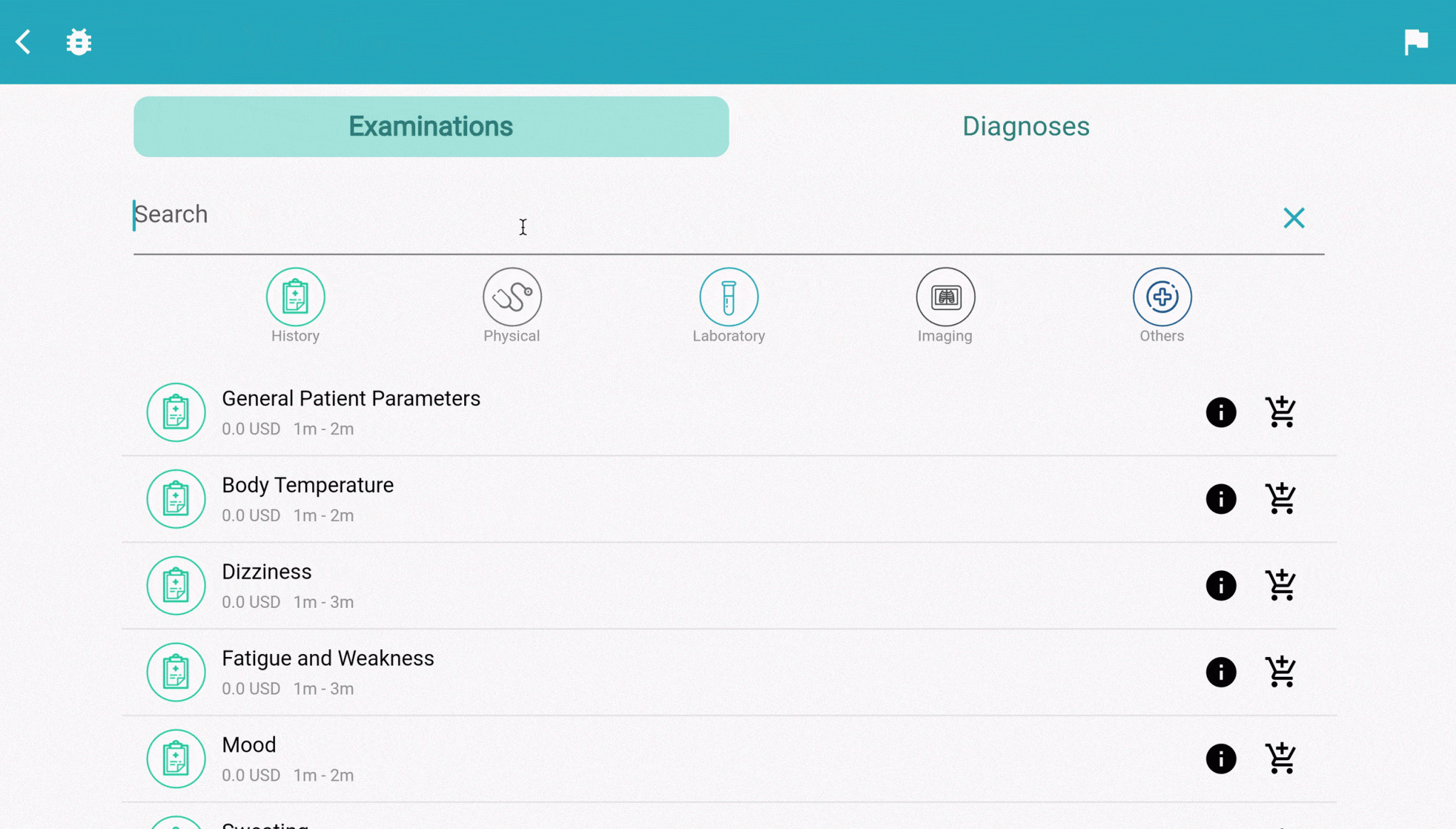Go beyond multiple choice questions.
Provide your students with a simulated decision making environment.

Go beyond multiple choice questions.
Provide your students with a simulated decision making environment.

Why to enhance training with virtual patients?
Real-life scenarios
Real-life patient care requires a different approach than the often used multiple-choice questions.
Track compliance
With InSimu, instructors can directly track their students’ diagnostic thinking and check whether they follow guidelines when diagnosing a patient.
Evidence-based approach
Train your students to learn the evidence-based diagnostic thinking.
Increase cost-and time consciousness
Prepare them for real-life clinical work and educate them about the importance of limited resources.
How it works?
InSimu shows what it is like to think as a doctor.
InSimu mimicks clinical decision making environment in the utmost realistic way.
500 available tests
Let your students experience the scary freedom of choice and let them choose which are the relevant history, physical, laboratory, or imaging tests.
Unrestricted game play
Let your students examine the patient as long as they need to make an evidence-based decision.
Open-choice diagnostic pathway
Life is not a quiz. The options are unlimited which route your students choose to take in the pathway.
Cost and time factor
Beyond training to the evidence based diagnostic thinking, InSimu measures how cost and time-efficient the pathway is.
Special didactic features
Follow your students’ diagnostic thinking in a more sophisticated way than ever.
- Require reasons for ordering tests
- Require probable diagnoses
- Require treatment plan
Why to
complete training
with InSimu Patients?
agreed that they had gained experience with more diseases than in real clinical rotations.
of the students agreed that they could practice a larger scale of clinical decision making (e.g., ordering labs, imaging), than in real clinical rotations
agreed that they had more opportunities to practice on patients than in real clinical rotations
